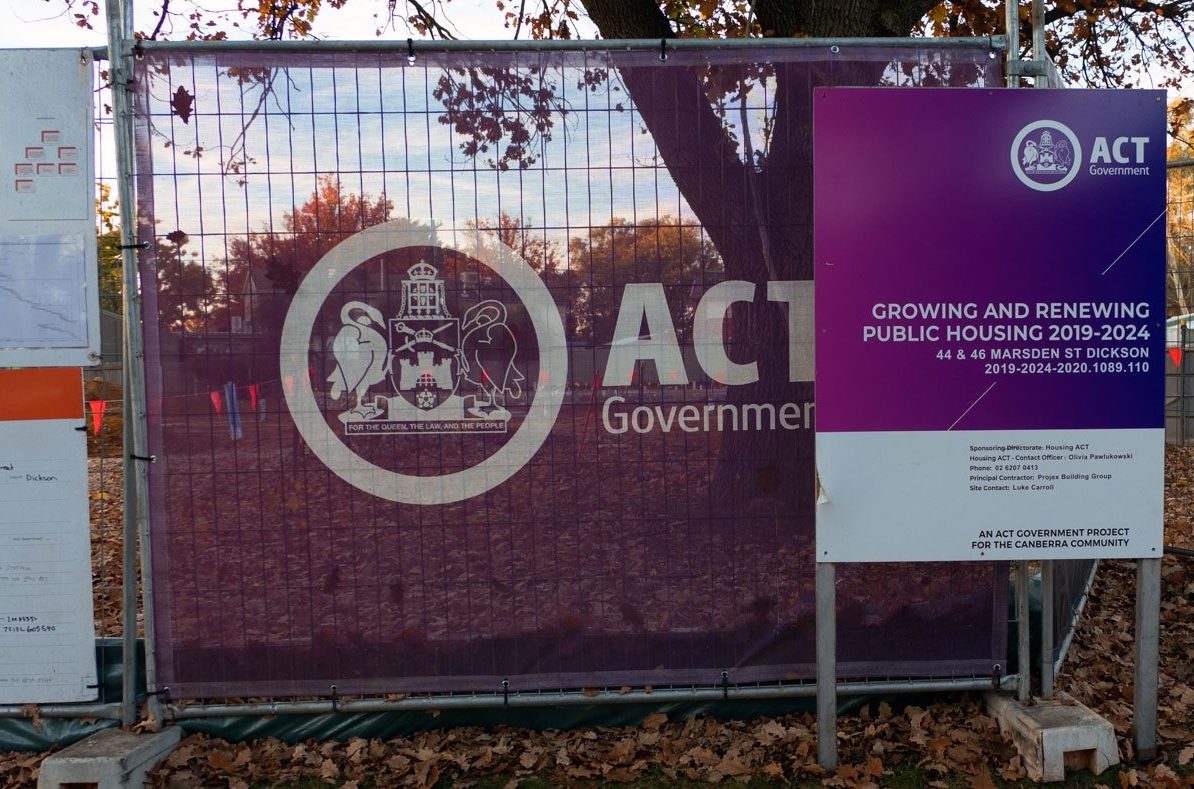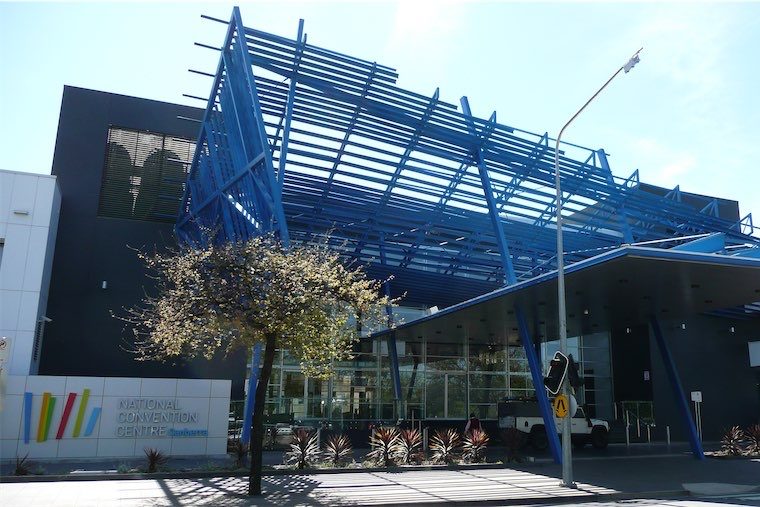
“That such a deterioration in the provision of social and indeed affordable housing of any description, has occurred in Canberra under a Labor/Greens coalition, and Labor and Greens ministers, is as remarkable as it is disappointing,” write JON STANHOPE and Dr KHALID AHMED.
IN a previous article, on December 1, based on data published by the Australian Institute of Health and Welfare (AIHW), we noted that the ACT government had, in the period from 2011 to 2020, reduced the number of units of public housing by 874 while the territory’s population increased by 63,000.
Two months later the Productivity Commission released its annual Report on Government Services (ROGS), which reveals that the number of public housing dwellings in the ACT reduced by a further 126 in 2020-21.
The Productivity Commission has also reported that, in fact, the number of households in social housing in the ACT decreased over the last year by 1.8 per cent, the largest decrease of all jurisdictions at a time when the ACT also had the least affordable rents in Australia.
The ROGS and its dataset comprise 45 tables and are sobering reading. It is difficult to find any aspect that sheds positive light on the ACT’s performance in the provision of public housing over time or compared to other jurisdictions.
Unsurprisingly, the report shows a significant increase in the number of greatest need applicants. From 2017 to 2021, the number increased by 118 per cent, which is the second highest after Victoria (139 per cent). However, the Victorian government has responded by increasing its expenditure on public housing, while expenditure in the ACT decreased.
In 2020-21 alone, net recurrent expenditure on social housing in the ACT decreased by 3.1 per cent, while nationally it increased by 3.4 per cent. Victoria recorded the largest increase (30.6 per cent), followed by the NT (19.9 per cent) and NSW (6.2 per cent).
Going forward, there are further cuts to social housing embedded in the ACT Budget. As we have previously pointed out, the 2021-22 Budget forecasts a decrease of 4.1 per cent per annum on average in expenditure on Social Protection, which includes among other things, expenditure on public housing.
The ROGS data shows that public housing allocations in the ACT are indeed highly targeted with 99.1 per cent of the households on low income in 2021, an increase from 98.7 per cent in 2018, and are the second highest behind NSW (99.3 per cent). While this may reflect an “efficient” use of existing stock, it also points to a higher need for support services. However, the government’s recent budgetary allocations do not respond to that need.
The Productivity Commission’s reporting framework is comprehensive, encompassing access, amenity, dwelling location, customer satisfaction, match of dwelling location to household size etcetera, besides the usual measures on expenditure and stock numbers.
In 2021, the overcrowding rate in ACT public housing was 4.8 per cent compared to a national average of 4.2 per cent, and an increase from 4.5 per cent in 2017. SA (2.1 per cent), NSW (3.2 per cent) and WA (4.3 per cent) recorded lower rates of overcrowding.
Overcrowding rates for Aboriginal and Torres Strait Islander households in public housing are much higher across all jurisdictions, ranging from 5.3 per cent in NSW to 12.8 per cent in the NT. In the ACT this rate increased from 6.8 per cent in 2017 to 7.5 per cent in 2021.
On the other hand, the proportion of stock which is underutilised increased from 17.4 per cent in 2017 to 18.4 per cent in 2021, the second highest of all jurisdictions. The increase in overcrowding together with the increase in underutilisation highlights an increasing mismatch between tenants’ needs and stock allocation.
The ROGS data also highlights a significant deterioration in “dwelling condition” in ACT public housing which is defined as: “The proportion of households living in houses of an acceptable standard. A house is assessed as being of an acceptable standard if it has at least four working facilities (for washing people, for washing clothes/bedding, for storing/preparing food, and sewerage) and not more than two major structural problems.”
In the ACT dwelling condition declined from 80.2 per cent of households in 2018 to 73.4 per cent in 2021. The declines in dwelling condition for Aboriginal and Torres Strait Islander households was more significant from 76 per cent in 2018 to 60 per cent in 2021. Likewise, for households with a member with a disability, dwelling condition declined from 82.3 per cent in 2018 to 69 per cent in 2021.
Not surprisingly, customer satisfaction in the ACT, as reported by ROGS, has also dropped significantly in recent years. In 2016, customer satisfaction was 74.8 per cent compared to the national average of 72.1 per cent. In 2021, this had dropped to 63.2 per cent (the lowest of all jurisdictions) compared to the national average of 71.9 per cent.
It is perplexing that the decrease in public housing stock and the decline in performance in the ACT have occurred despite a raft of “flagship” announcements and promises by the ACT government on investment in public housing in successive Budgets over several years totalling more than $500 million in relation to its Public Housing Renewal Program. The ROGS data does not reveal any such investment in public housing in the ACT.
In reality, as we noted previously, the program was clearly aimed at freeing up land for sale and redevelopment, which has certainly boosted the government’s coffers, but has resulted in enormous distress and dislocated tenants from their communities and services.
In the following note to one of the performance measures, namely, the turnaround time for vacant stock, the ROGS report alludes to the renewal program being a cause of the deterioration in turnaround times of 25.9 days in 2017 to 81.2 days in 2020, and 49.9 days in 2021: “For the ACT, the increase in turnaround time for 2019-20 has a number of reasons including the capital redevelopment program, longer allocation times for new dwellings to ensure they meet both housing and community needs of applicants, and time taken to determine management arrangements for new dwellings (eg properties to be managed by NGOs)”.
Coincidentally, at the time of writing, Emma Campbell, CEO of ACTCOSS, blasted as “heartless, cruel and callous” a decision by ACT Minister for Housing Yvette Berry to evict more than 300 public housing tenants from their homes in inner Canberra in order that the houses could be sold on the open market.
It is quite clear that public and/or social housing is an increasingly low priority of the current ACT government. Investment in such housing not only reflects the values of a government, but also has well established substantial economic benefits.
That such a deterioration in the provision of social and indeed affordable housing of any description, has occurred in Canberra under a Labor/Greens coalition, and Labor and Greens ministers, is as remarkable as it is disappointing.
Who can be trusted?
In a world of spin and confusion, there’s never been a more important time to support independent journalism in Canberra.
If you trust our work online and want to enforce the power of independent voices, I invite you to make a small contribution.
Every dollar of support is invested back into our journalism to help keep citynews.com.au strong and free.
Thank you,
Ian Meikle, editor




Leave a Reply